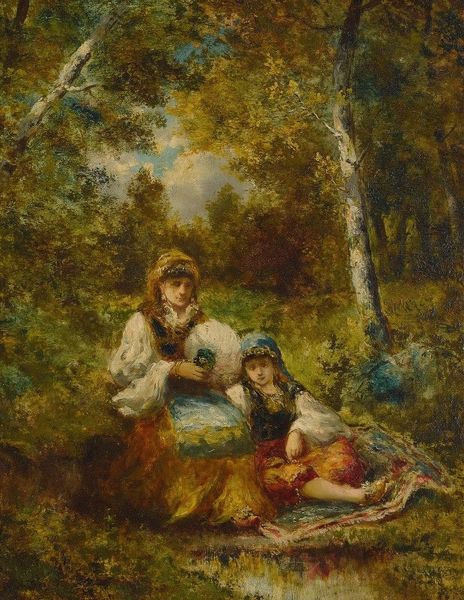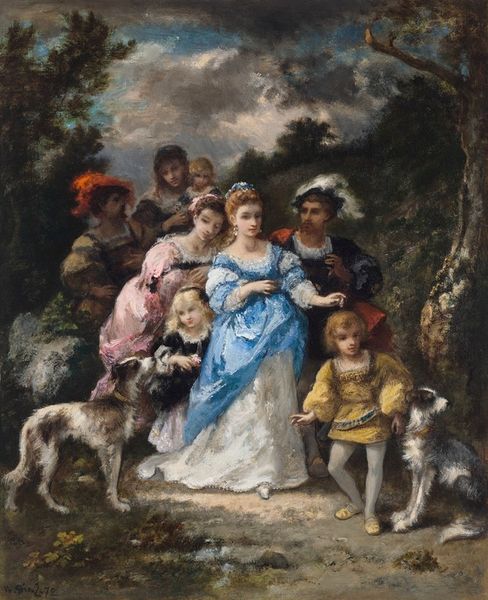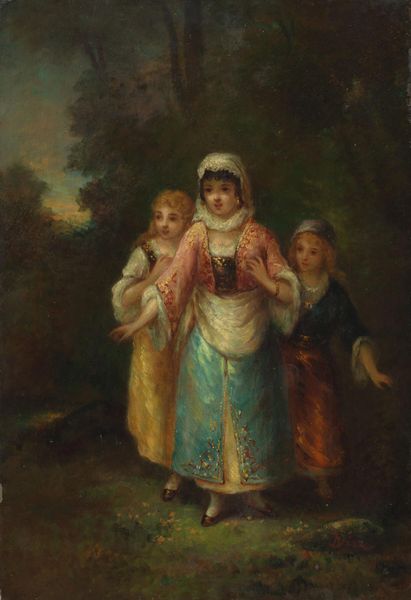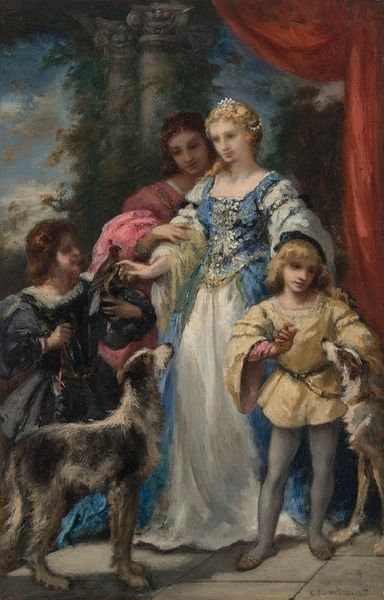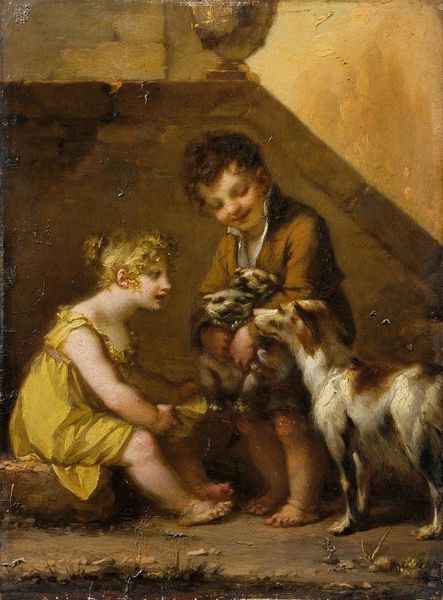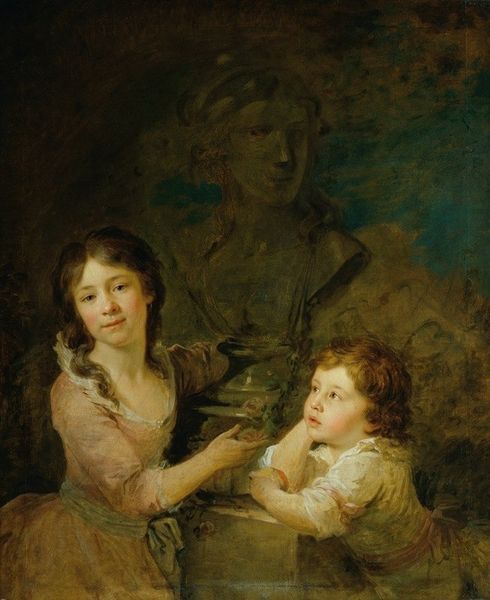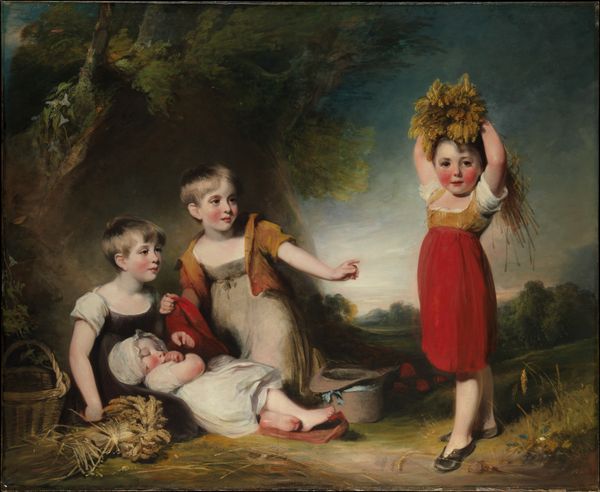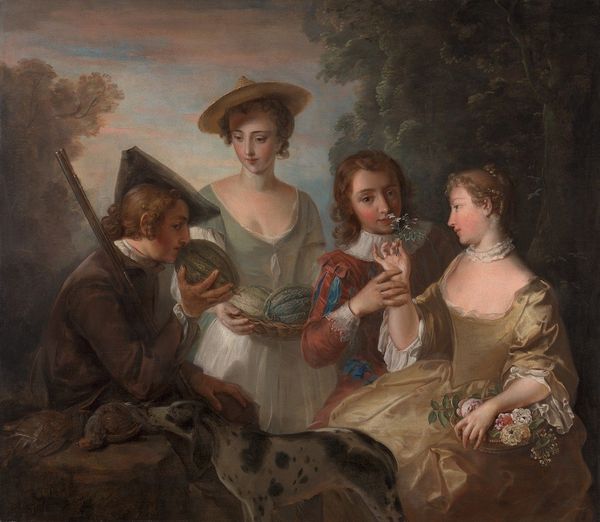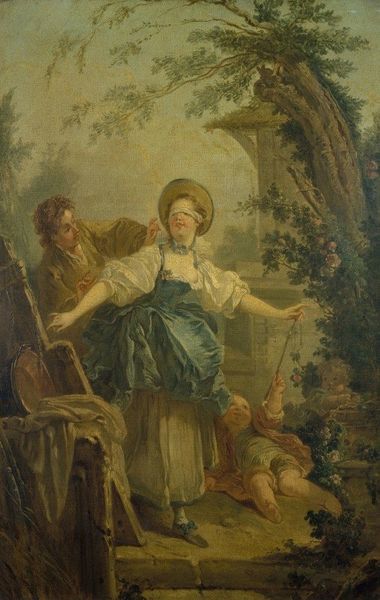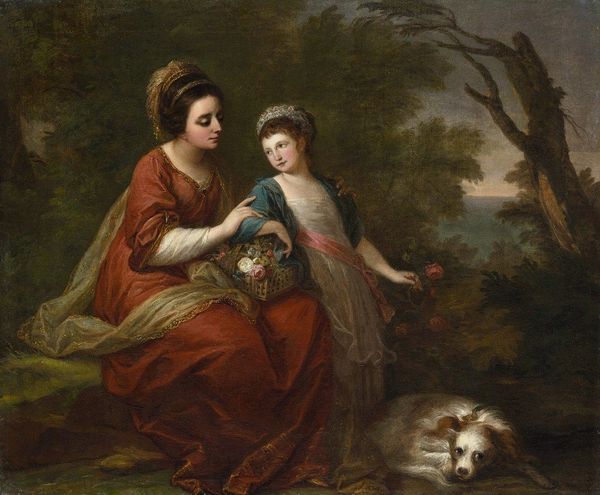
Copyright: Public Domain: Artvee
Editor: Looking at "Three Little Girls" painted around 1870 by Narcisse Virgilio Diaz using oil paint, I am struck by the way the artist depicted children seemingly unburdened by much in the way of responsibilities. What's your read on the historical context here? Curator: Diaz presents us with a slice of idealized life. But, I always try to examine the materials first: the oil paint itself. Consider how, around this time, industrial production made paints more readily available and affordable. It enabled artists, including Diaz, to work on a larger scale, reaching broader audiences. Editor: So the means of production changed what art could be made, consumed, and even who could afford to be an artist? Curator: Precisely! And consider the clothing the girls wear. While appearing simple, access to those textiles reflects their family's position within the societal structure. Look closely at the facture. How might the visible brushstrokes reflect the burgeoning art market’s desire for an artist’s touch, emphasizing authenticity? Editor: So, it is not just the subject but also the stuff used to make the work and how those materials reached the artist. It makes me wonder if it says something about the increasing value placed on individual labor during the time. Curator: Indeed! We can examine art's relation to material culture, labor conditions, and economic shifts through its creation and circulation. We are far from a straightforward portrayal of children and dogs; what initially reads as romantic and sentimental becomes entangled with labor practices, resource distribution, and evolving consumer markets. Editor: Thanks, I had not considered all the material and societal inputs behind it, especially things like accessibility to fabrics. Curator: Exactly! It’s a potent reminder that artworks don’t just materialize from thin air. Everything down to the availability of pigments holds layers of historical and social information.
Comments
No comments
Be the first to comment and join the conversation on the ultimate creative platform.
